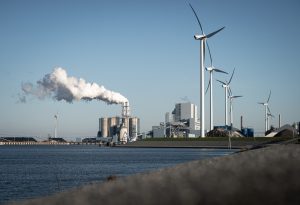Jakarta – The La Niña phenomenon is expected to dominate the end of 2024, bringing the potential for extreme weather in various parts of Indonesia. The Meteorology, Climatology and Geophysics Agency (BMKG) reminds the public to increase awareness of the impact of a significant increase in rainfall ahead of Christmas and New Year celebrations.
The head of BMKG, Dwikorita Karnawati, explained that the La Niña phenomenon this time can strengthen the already active atmospheric dynamics, causing rainfall in several regions of the country to experience a drastic surge.
“The La Nina phenomenon has been confirmed and is expected to increase rainfall by up to 40 per cent in several regions. This effect is increasingly felt along with the entry of the peak of the rainy season,” Dwikorita said in her statement on Tuesday, December 3.
BMKG noted that more than 300 Season Zones (ZOM) in Indonesia, or about 43 per cent of the total area, are in the peak phase of the rainy season from November to December 2024. Areas such as the southern coast of Java, most of Sumatra, Kalimantan and Sulawesi are most at risk of extreme weather.
“Rainfall with a high intensity of more than 200 mm per month is predicted to occur during December 2024. This condition carries the risk of floods, landslides, and flash floods, especially in vulnerable areas,” he added.
In addition to La Niña, BMKG also identified the influence of Madden Julian Oscillation (MJO) atmospheric waves and cold surge (cold winds from Asia), which can increase rain intensity and high waves in the waters.
Threat of hydrometeorological disasters and their impacts
BMKG emphasises that the potential for hydrometeorological disasters such as floods and landslides should be a serious concern. BMKG Climatology Deputy Ardhasena Sopaheluwakan said that rain intensity will peak from December 2024 to January 2025, with the highest risk period ahead of Christmas.
“The peak of the rainy season will last until February 2025 in most areas, with a significant threat of extreme weather at the end of this year,” she said.
Not only land but also the sea needs to be watched out for. The cold surge phenomenon that usually occurs during La Niña has the potential to trigger high waves of up to four meters in some Indonesian waters. BMKG asks shipping operators, fishermen, and crossing organisers to be careful of sudden weather changes.
With increased atmospheric activity at the end of this year, BMKG hopes that the public and local governments can work together to ensure activities’ safety and smooth running during the Christmas and New Year 2024/2025 period. (Hartatik)













